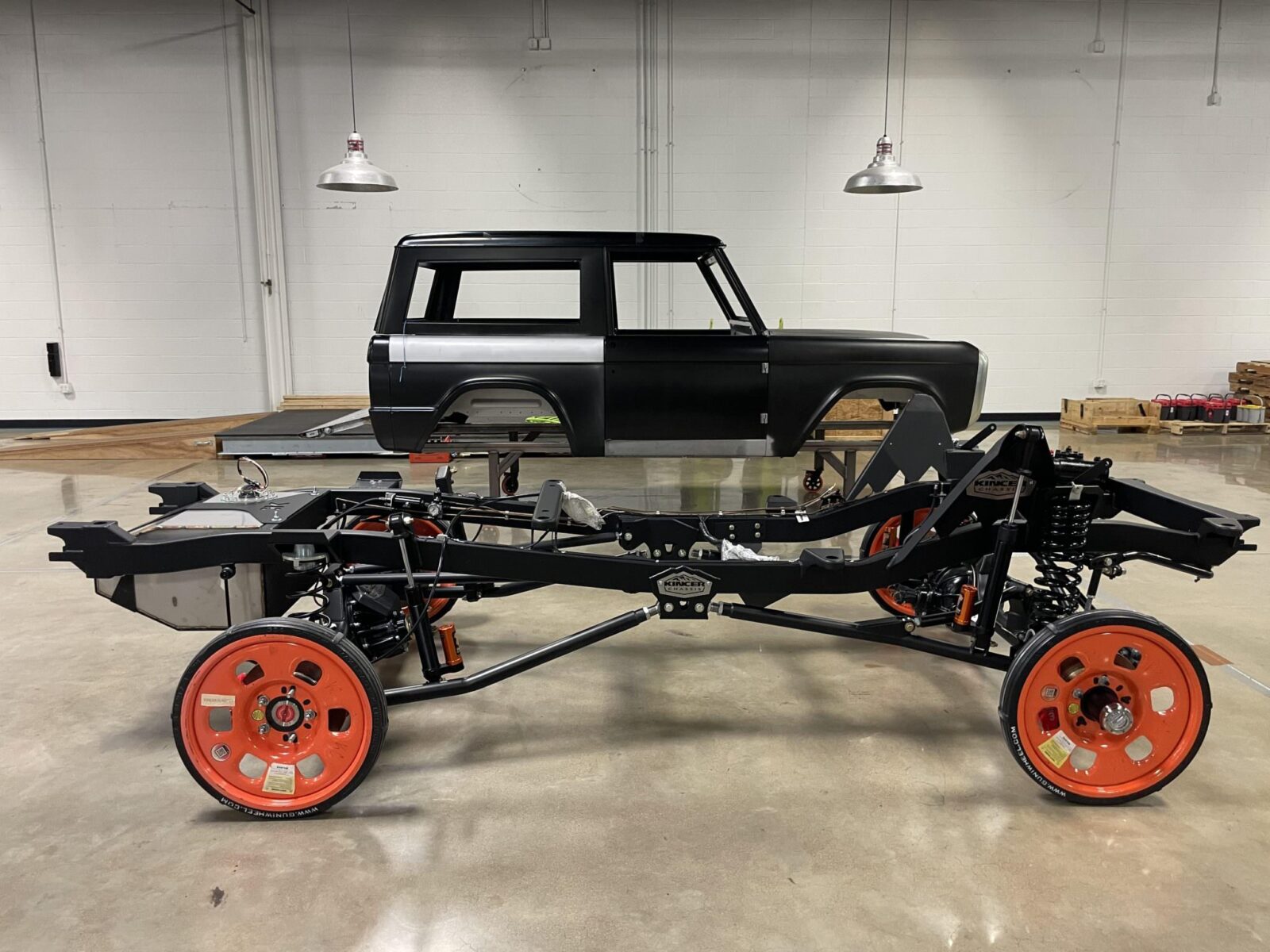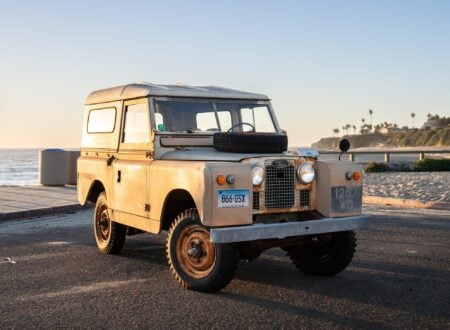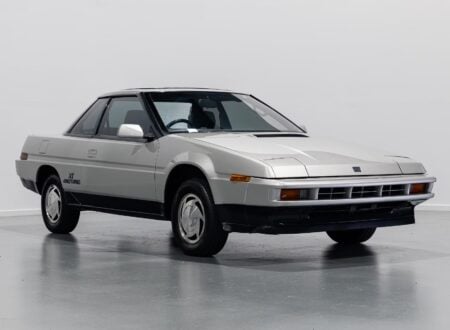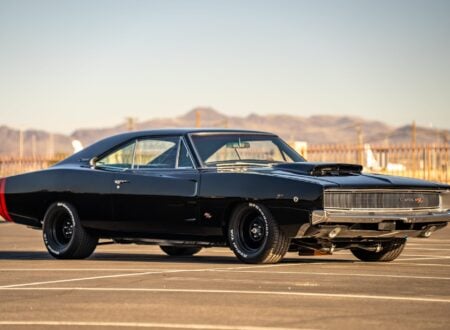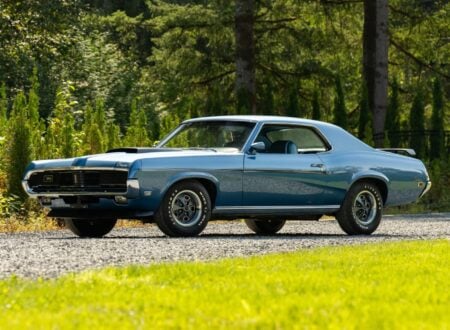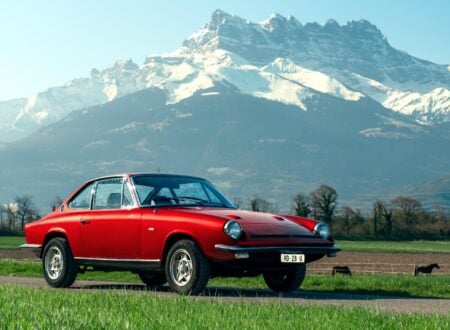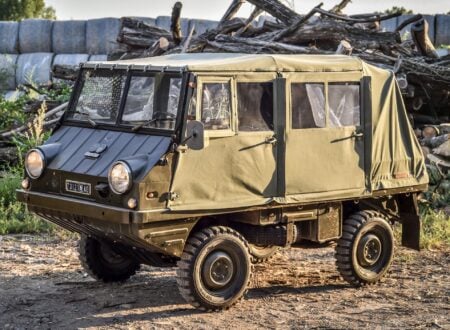This is a collection of parts that were acquired to form a build-it-yourself kit for a first-generation Ford Bronco, though unlike the factory-originals, this one has a vastly improved chassis, suspension, and brakes.
The kit is comprised of a Kincer Freeway Series chassis, a reproduction Bronco body from Shannon’s Broncos, Tractive electronically controlled suspension, Wilwood calipers, and quite a bit more. The vehicle is designed for use with a Ford Coyote V8, though an engine isn’t included with the sale.
Fast Facts: A Build-It-Yourself Ford Bronco
- This build-it-yourself package combines a reproduction Shannon’s Broncos body with a Kincer Freeway Series chassis, creating a first-generation Ford Bronco that far exceeds original factory specifications through modern engineering while maintaining the classic aesthetic that made these vehicles iconic.
- The kit features significant upgrades including Tractive electronically controlled suspension, Wilwood four-piston brake calipers, a 23-gallon stainless steel fuel system with high-flow pump, and it’s designed to take a Ford Coyote V8.
- The original first-generation Bronco, produced from 1966-1977, was a pioneer in the personal SUV market as Ford’s answer to the Jeep CJ-5 and International Scout, offering more refinement than competitors while establishing design principles that continue influencing modern off-road vehicles today.
- Located in Mansfield, Texas, this complete kit includes all documentation, spare parts, and bill of sale, though buyers must separately source their own Coyote V8 and other parts to complete this comprehensive build project successfully.
History Speedrun: The First-Gen Ford Bronco
The first-gen Ford Bronco debuted in August of 1965 as a 1966 model year vehicle, it was designed from the ground up by Ford to compete directly with the Jeep CJ-5 and the International Harvester Scout, two vehicles that had essentially founded the burgeoning personal SUV market niche.
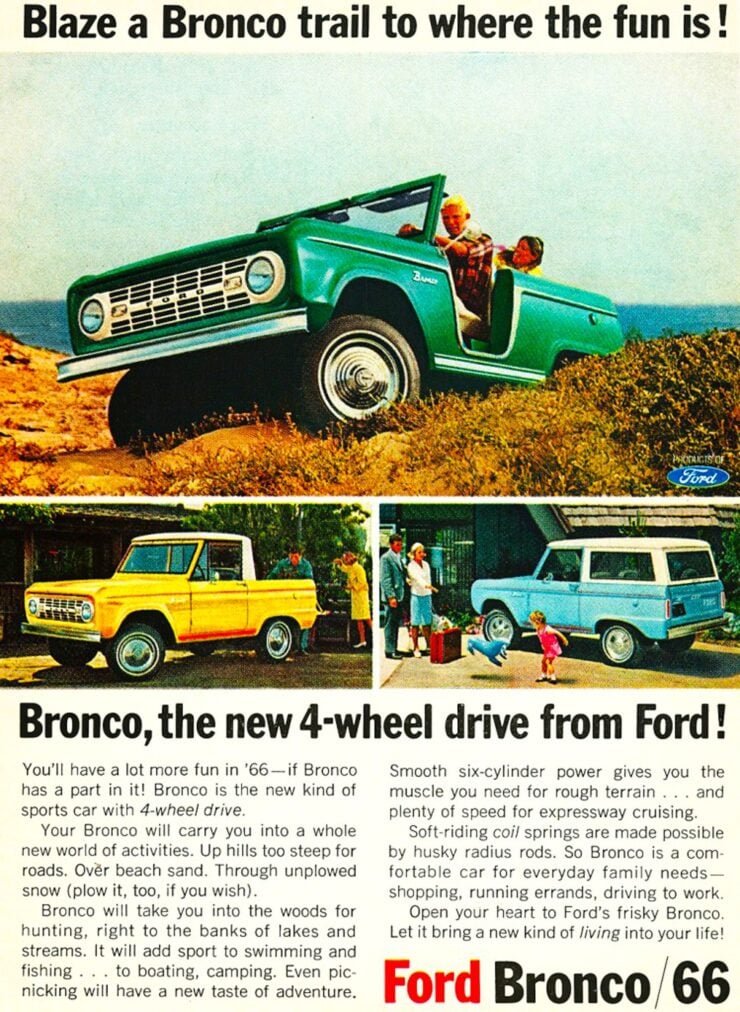

Conceived under the direction of Ford product manager Donald Frey and developed by a small engineering team led by Paul G. Axelrad, the Bronco was envisioned as a compact 4×4 capable of handling both off-road trails and daily driving, with more on-road civility than its competitors.
The project was approved in February 1964 and fast-tracked for production with a unique chassis and body not shared with any other Ford vehicle.
The Bronco featured a fully-boxed ladder frame and a suspension setup that was relatively advanced for the segment at the time. The front end used a coil-sprung Dana 30 live axle located by radius arms and a track bar, while the rear used leaf springs and a Ford 9-inch axle. This design provided improved ride quality and front-end articulation compared to its leaf-sprung competitors.
Three body styles were offered initially: a two-door wagon, a half-cab pickup, and an open roadster, though the latter was dropped after 1968 due to low demand, which resulted in poor sales.
The original engine was a 170 cubic inch inline-six borrowed from the Ford Falcon, producing 105 bhp. This was paired with a three-speed column-shifted manual transmission and a Dana 20 transfer case. A 289 cubic inch V8 became optional later in 1966, upgraded to a 302 V8 in 1969.
The inline-six grew to 200 cubic inches by 1973, and eventually to 250 cubic inches by 1974 in select trims. Power steering and automatic transmission options became available in 1973, addressing previous criticisms of drivability – particularly for those who daily drove their vehicles in more urban environments.
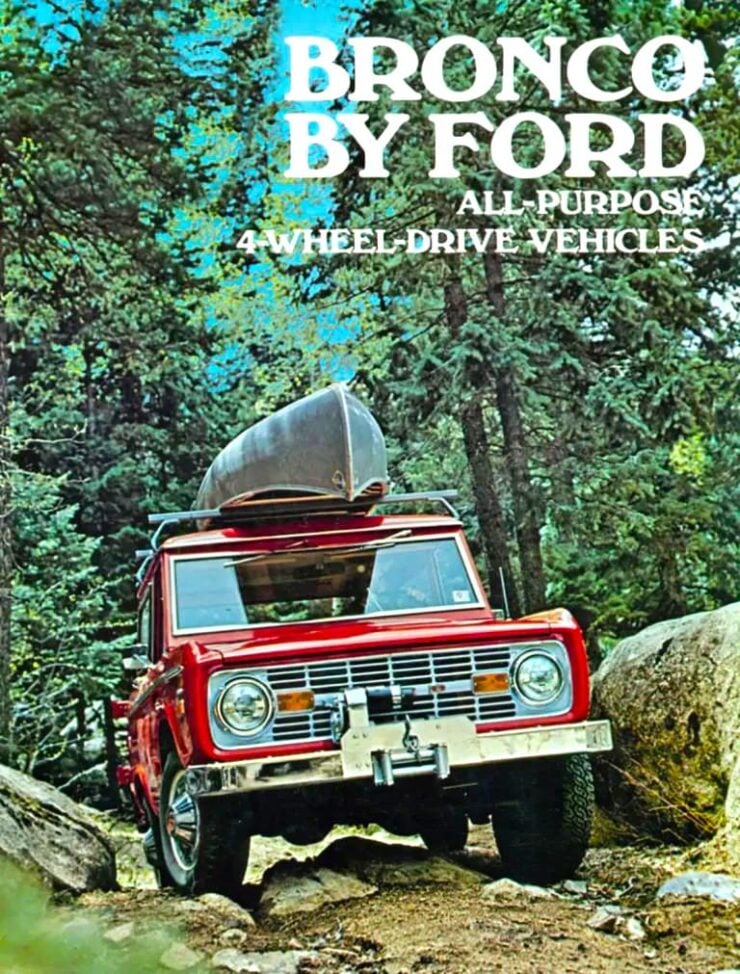

Styling remained largely unchanged throughout its production, though functional updates included the switch from vacuum to electric wipers in 1973, the introduction of a Dana 44 front axle in 1971, and an emissions-compliant evaporative fuel system. The U13 roadster was the rarest model, with only around 5,000 built. The half-cab pickup (U14) ended production in 1972, but it remains highly collectible today.
The first-gen Bronco ended its run in 1977. Its production lifespan reflected its unique position in the market – it was tougher than a standard station wagon, more refined than a Jeep, and smaller and simpler than the full-size SUVs that had started to appear with the likes of the Jeep Wagoneer and Chevrolet K5 Blazer.
The Bronco’s blend of compact size, reliable mechanical underpinnings, and its minimalist style would go on to influence generations of 4×4 design – including the all-new Ford Bronco that was released in 2021 with its design clearly based on its original forebear.
The Ford Bronco Project Shown Here
The collection of parts you see here was gathered with a view to building a first-generation Ford Bronco that would be more advanced than the original in just about every conceivable way.
The kit includes a Kincer Freeway Series chassis, made with 2×4″ rectangular mandrel-bent frame rails, and designed for 1966 to 1977 model year Ford Broncos. It’s powder-coated in black, it has additional chassis bracing, and a structural transmission crossmember designed for use with the third-generation 6R80 Atlas automatic transmission.
The chassis is also equipped with a Krawlers Edge 23-gallon stainless-steel fuel tank that has a 340-lph fuel pump. The fuel lines, a cartridge-style fuel filter, a pressure gauge, and regulator are all installed already, and it’s designed to accommodate a Ford Coyote V8 crate engine.
The suspension consists of coil springs front and back, with front and rear sway bars, and a four-link rear setup. It also has Tractive electronically controlled suspension components fitted, a 2″ body and bumper lift, and a 9″ axle in the rear with a front axle made from a 9″ center with Dana 44-style axle tubes and Warn locking hubs.
The chassis is fitted with red-painted four-piston Wilwood calipers, as well as UltraBend brake lines, braided hoses, and rotors. The whole assembly is currently sitting on Guni Wheel shop wheels to allow for easy rolling and transportation.
A Shannon’s Broncos reproduction first-generation Bronco body is included in the sale, it has Dennis Carpenter flared rear quarter panels, a hardtop, a rear lift gate, a fuel filler guard, and exposed door hinges. It’s worth noting that a discreet hood bulge is already in place, this is to allow clearance for the Coyote V8.
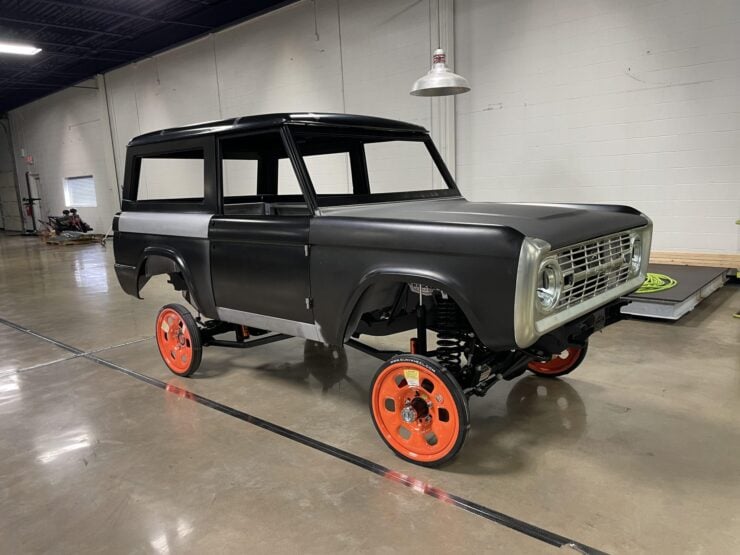

This kit does need plenty of parts to complete a running, driving Bronco, including the engine, transmission, glass, electrics, interior, and many other ancillaries – but it does provide an excellent starting point for someone looking for a rewarding summer project.
The whole kit and caboodle is now being offered for sale out of Mansfield, Texas with purchase records, spare parts, and a bill of sale. If you’d like to read more about it or register to bid you can visit the listing here.
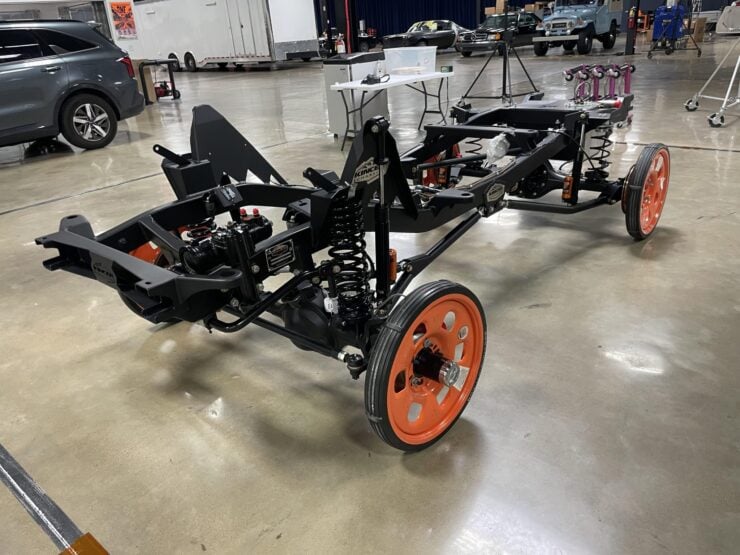
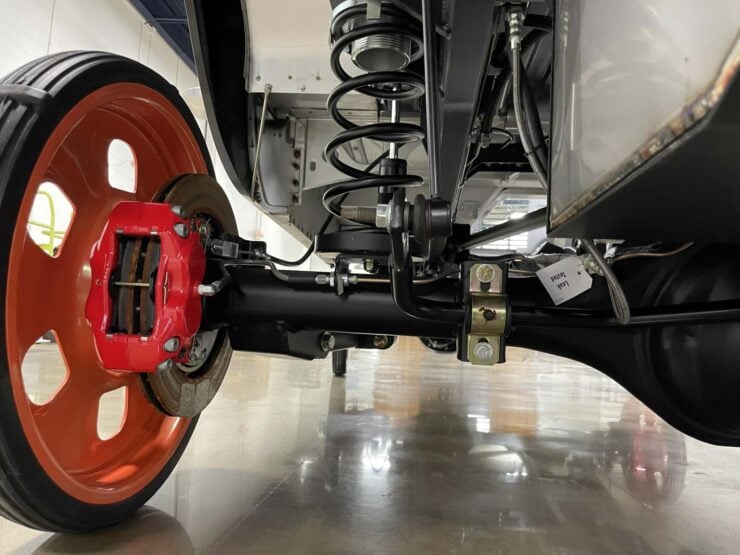
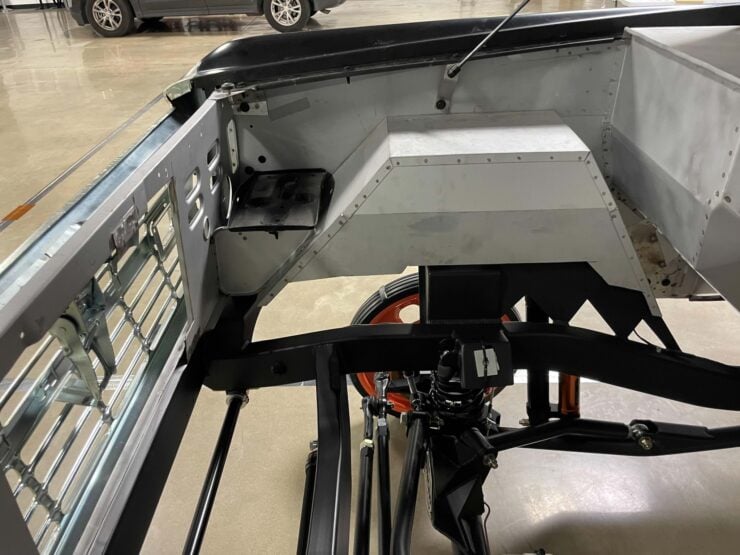
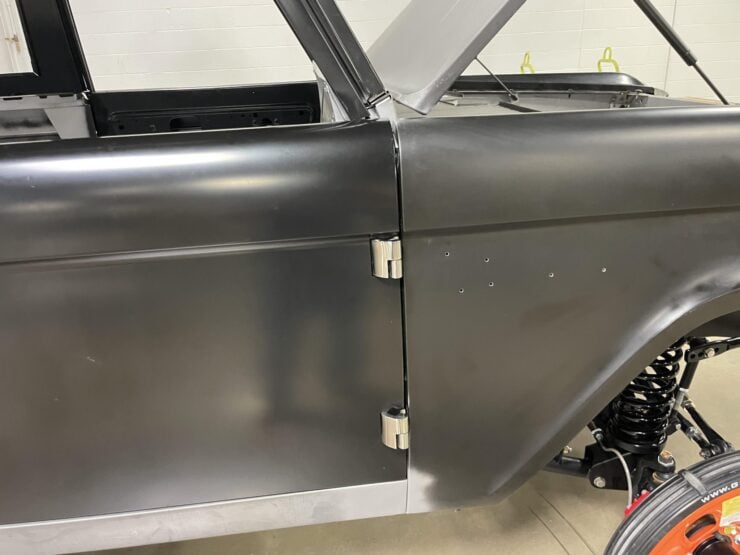
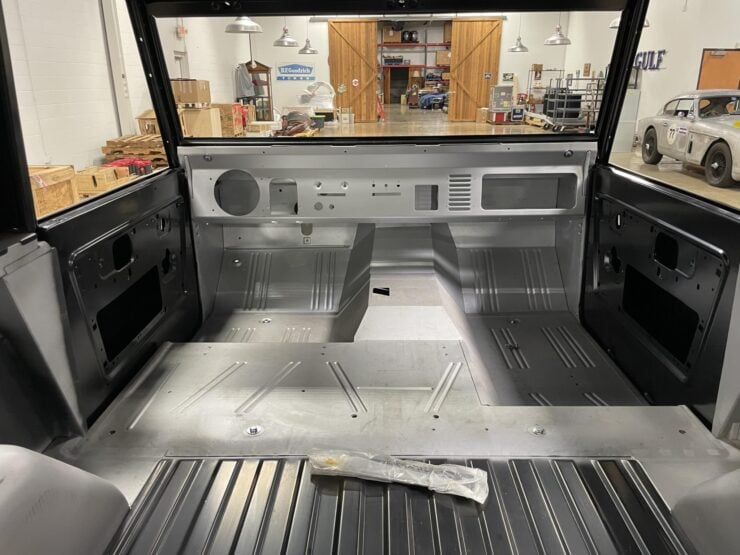
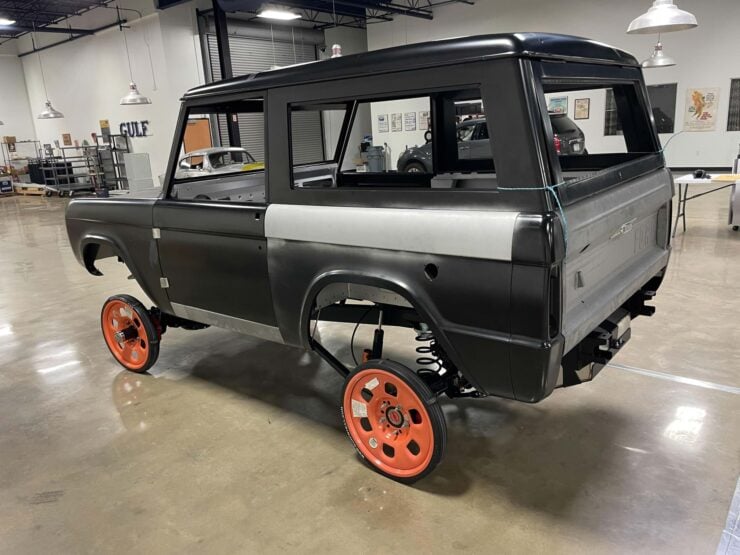
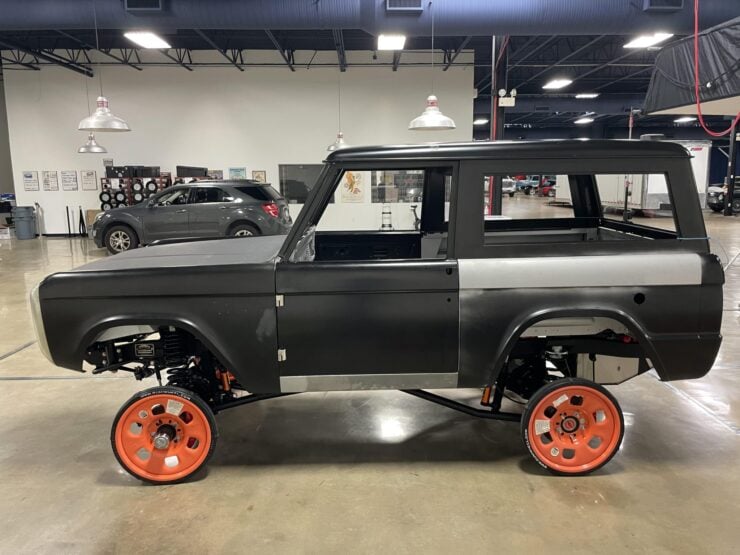

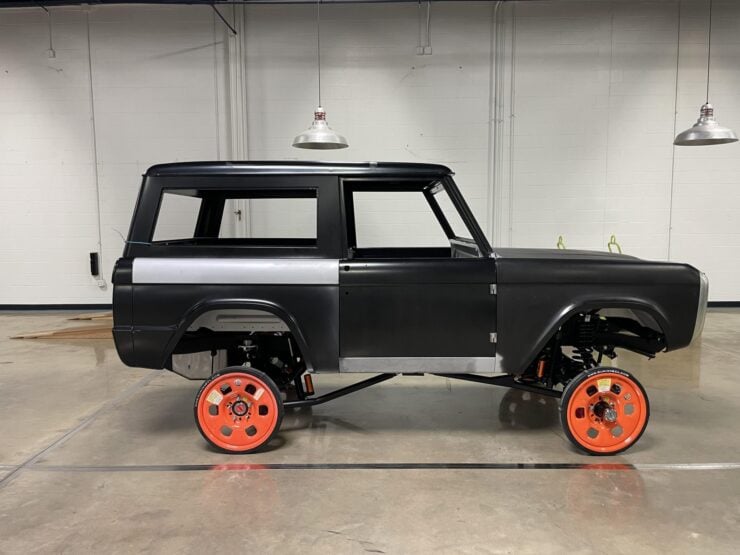
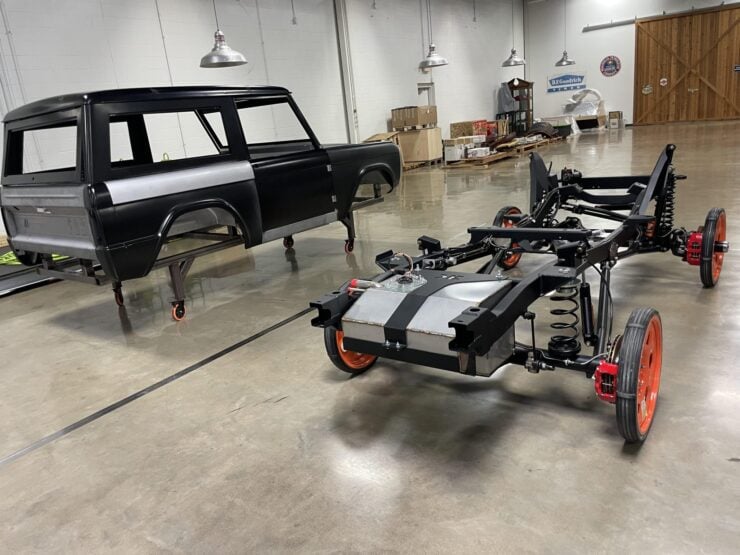
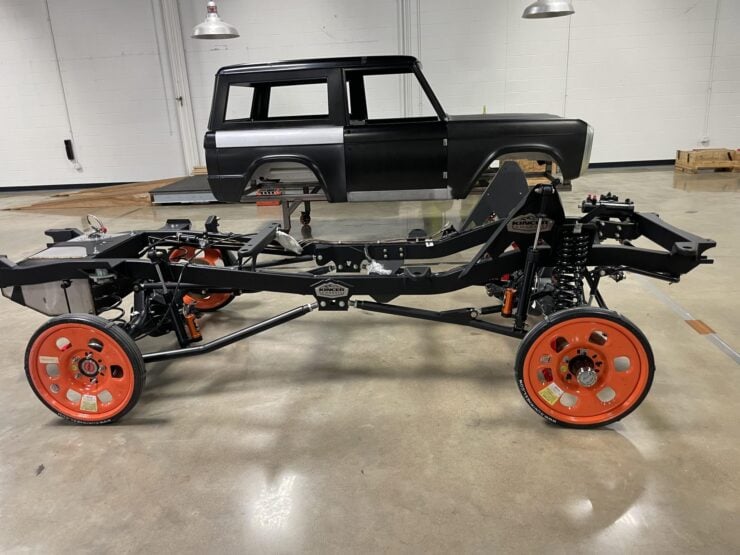
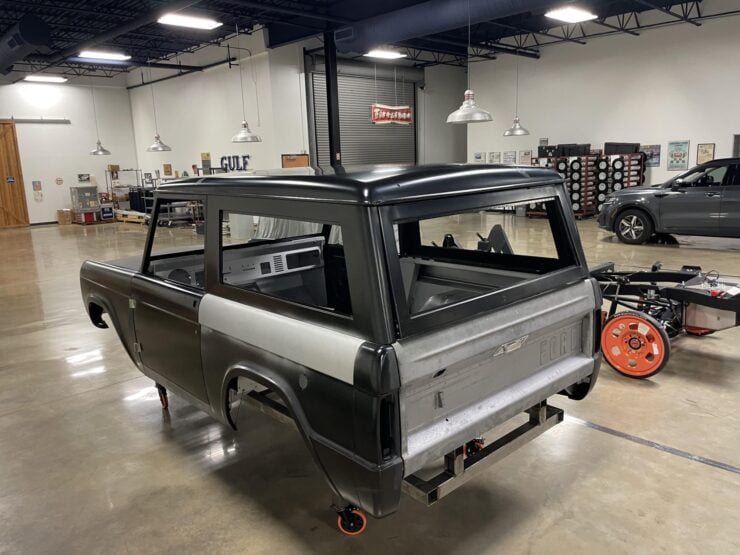
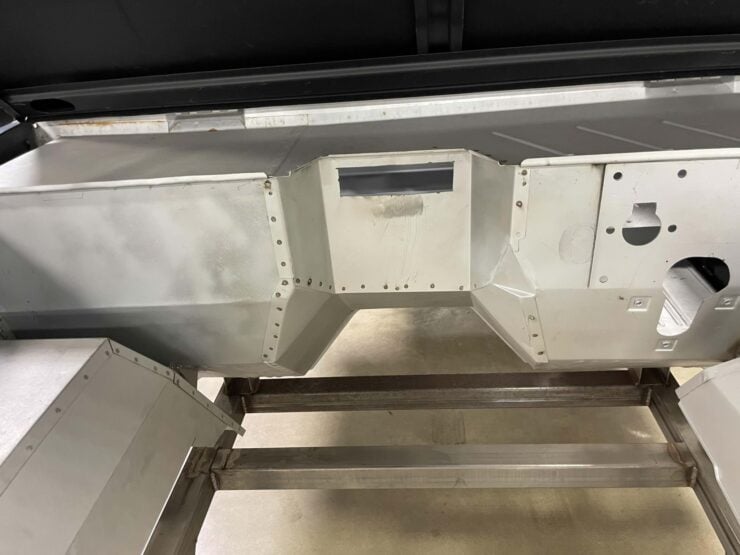
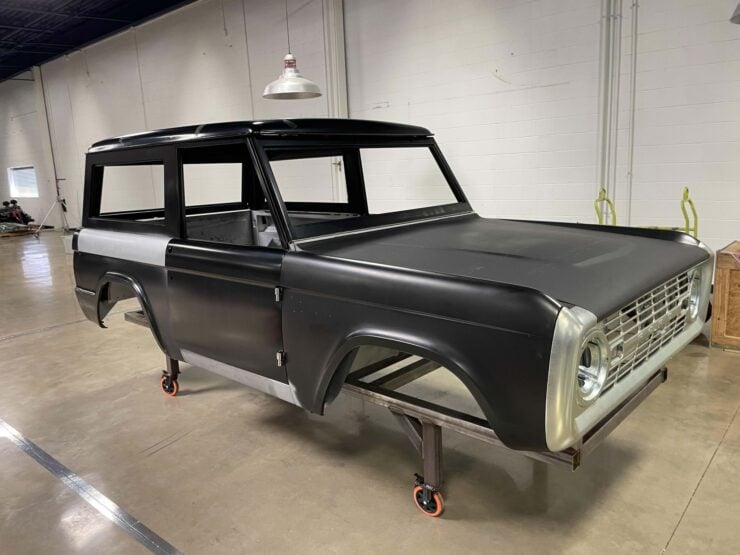
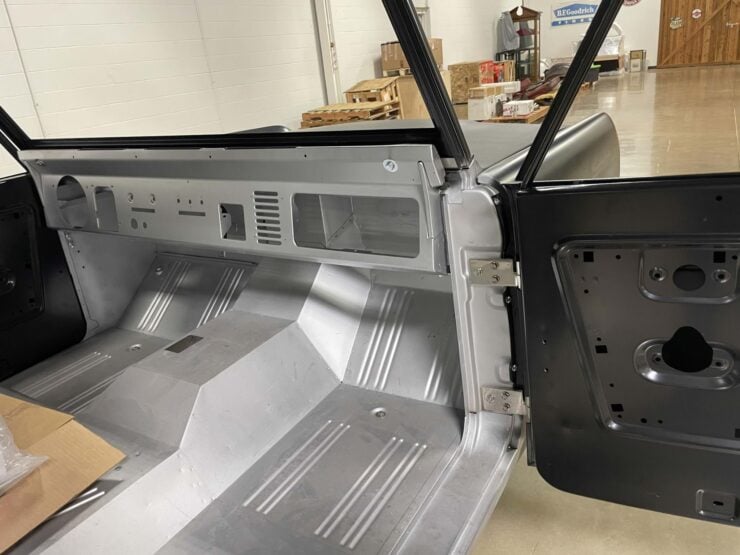
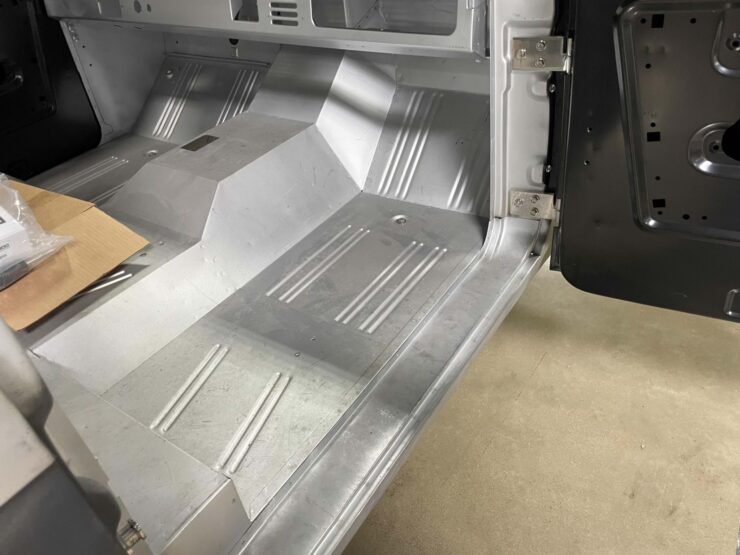
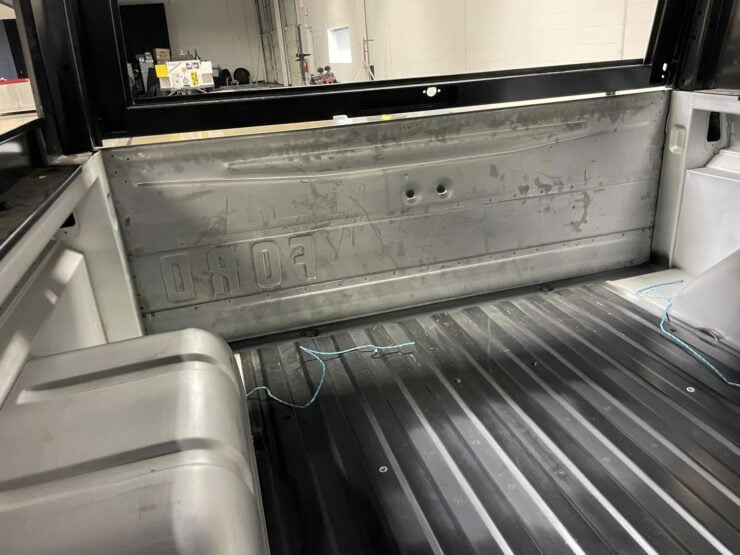
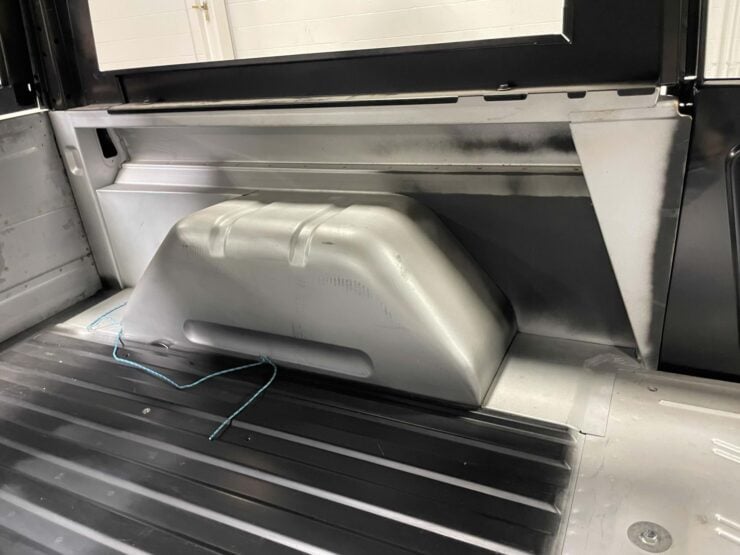
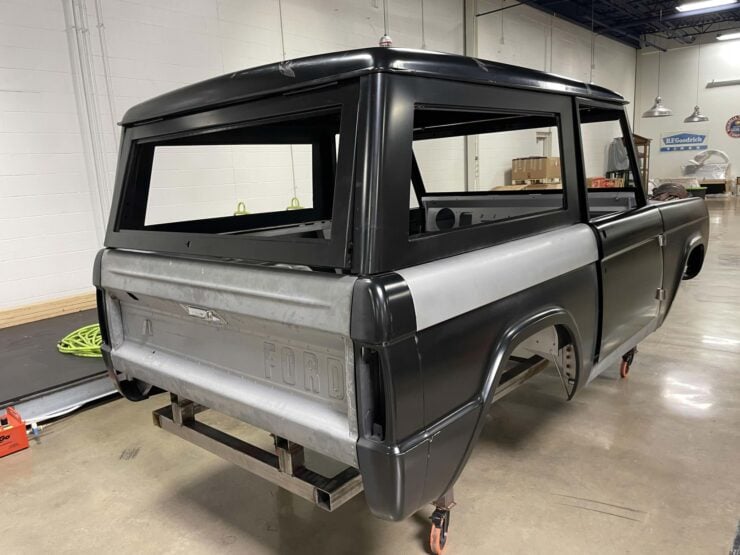
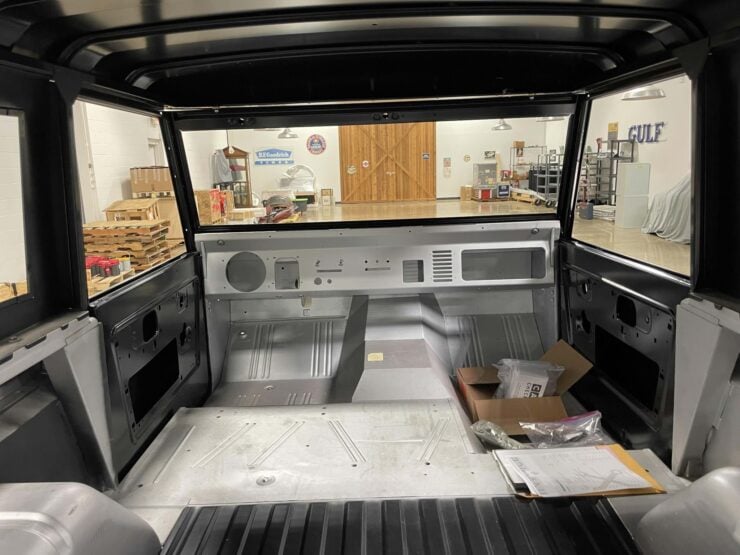
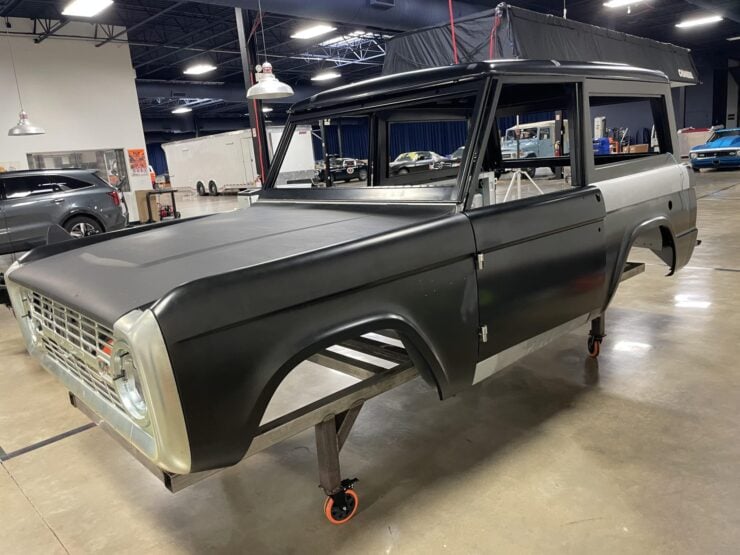

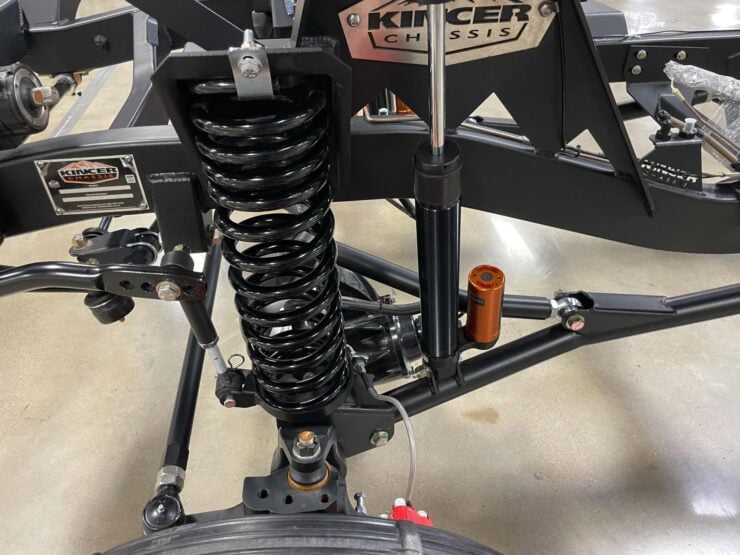
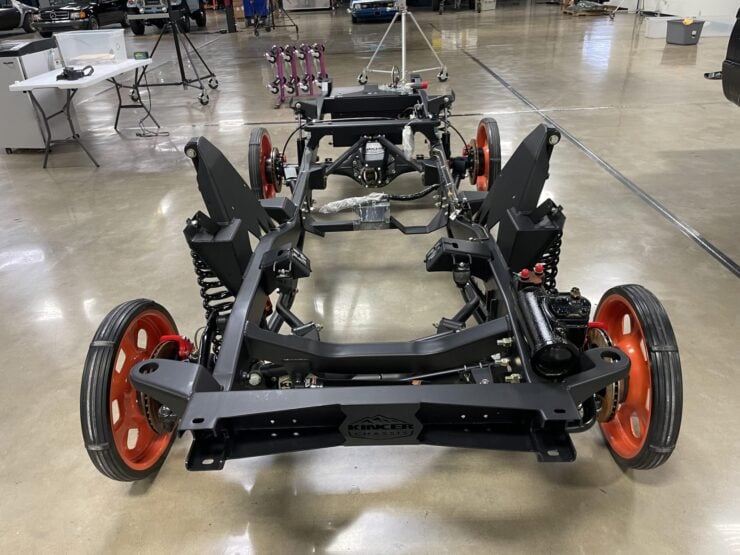
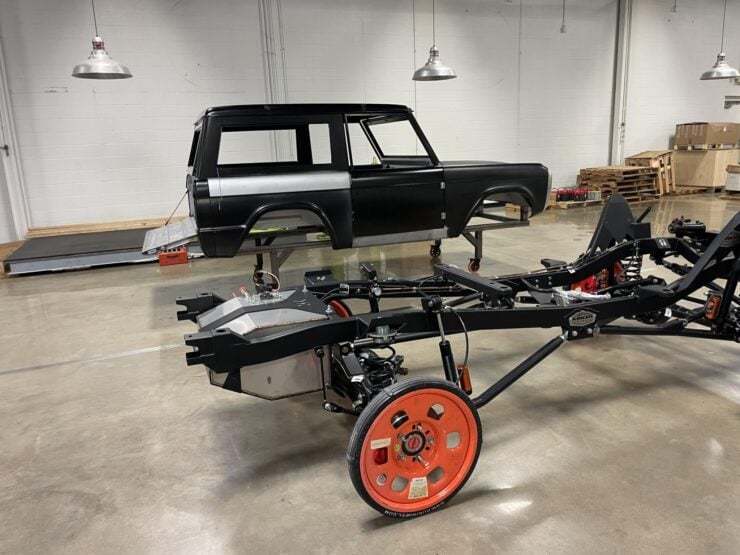
Images courtesy of Bring a Trailer

